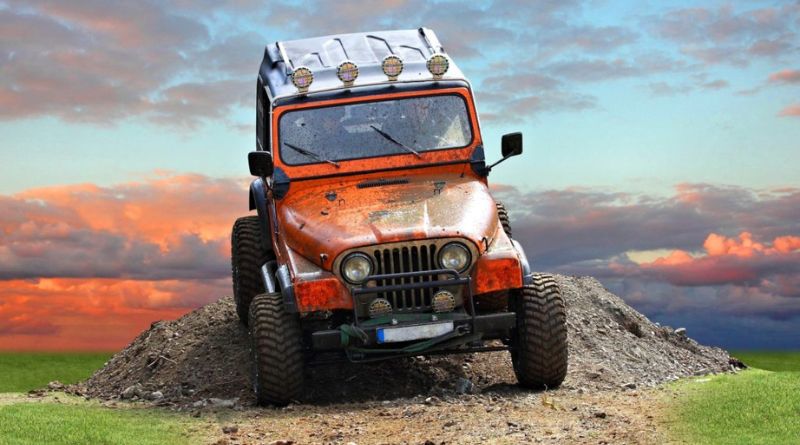Off-roading is an exhilarating sport that connects riders with nature and offers a unique thrill beyond traditional road riding. Whether you’re a novice eager to explore rugged trails or a seasoned enthusiast looking to enhance your skills, understanding the essentials of off-roading can make your experience safer and more enjoyable. Here’s the ultimate guide to off-roading, packed with tips for both beginners and experts.
Table of Contents
1. Understanding Off-Road Vehicles
Types of Off-Road Vehicles:
- ATVs (All-Terrain Vehicles): Versatile and stable, ATVs are excellent for various terrains and are popular among beginners.
- Dirt Bikes: Lightweight and agile, dirt bikes are designed for navigating rough trails and are favored by experienced riders.
- UTVs (Utility Task Vehicles): Also known as side-by-sides, UTVs offer more seating and cargo space, making them ideal for group adventures and hauling gear.
- 4×4 Trucks and SUVs: Equipped with powerful engines and advanced suspension systems, these vehicles are suited for challenging off-road conditions.
2. Essential Off-Roading Gear
Helmet: A high-quality helmet is crucial for safety. Full-face helmets offer comprehensive protection, while off-road-specific helmets often have better ventilation and a sun visor.
Protective Clothing: Wear durable, abrasion-resistant clothing such as riding jackets, gloves, and boots. Knee and elbow guards, as well as a chest protector, can add an extra layer of protection.
Navigation Tools: A GPS device or smartphone with offline maps can help you stay on track, especially in unfamiliar areas. It’s also useful to carry a compass as a backup.
First Aid Kit: Always carry a basic first aid kit to handle minor injuries and emergencies. Include items like bandages, antiseptic wipes, and pain relievers.
Repair Kit: A tool kit with essential items like a tire repair kit, multi-tool, and basic wrenches can help you address any mechanical issues that arise on the trail.
3. Preparing for Your Off-Road Adventure
Vehicle Inspection: Before hitting the trails, perform a thorough inspection of your vehicle. Check the tires, brakes, oil levels, and fluid conditions. Ensure that all components are in good working order.
Plan Your Route: Research and plan your route in advance. Choose trails that match your skill level and vehicle capabilities. Inform someone of your plans and expected return time.
Check Weather Conditions: Weather can significantly impact trail conditions. Check the forecast and be prepared for changes, such as rain or extreme temperatures.
Pack Essentials: Bring enough food, water, and other supplies for the duration of your trip. Ensure your gear is securely packed and balanced to avoid shifting during travel.
4. Off-Road Driving Techniques
Throttle Control: Smooth throttle application helps maintain traction and control. Avoid sudden acceleration or braking, which can lead to loss of control or damage to the vehicle.
Body Positioning: Shift your body weight to maintain balance and control. For instance, lean forward on steep descents and lean back on ascents to keep the vehicle stable.
Handling Obstacles: Approach obstacles like rocks, logs, and deep ruts at a steady pace. Use your vehicle’s suspension to absorb impacts and avoid sharp or sudden movements.
Trail Etiquette: Respect trail guidelines and other users. Stick to designated paths, avoid creating new trails, and be courteous to hikers and other riders.
5. Safety Tips
Ride Within Your Limits: Know your skill level and the capabilities of your vehicle. Avoid pushing beyond your comfort zone, especially on challenging terrain.
Stay on Marked Trails: Off-trail riding can lead to environmental damage and increase the risk of getting lost. Stick to marked trails and follow local regulations.
Communicate: If riding in a group, use hand signals or communication devices to coordinate movements and stay connected. Ensure everyone in the group is aware of safety procedures.
Stay Hydrated and Rested: Off-roading can be physically demanding. Take regular breaks, drink plenty of water, and ensure you’re well-rested before embarking on a ride.
Frequently Asked Questions
1. What should I look for in an off-road helmet?
Look for a helmet designed specifically for off-roading, with features such as good ventilation, a sun visor, and a sturdy chin guard. Ensure it meets safety standards and provides a comfortable fit.
2. How often should I perform maintenance on my off-road vehicle?
Perform routine maintenance according to the manufacturer’s recommendations, typically before each ride or after a set number of miles. Regularly check and service critical components such as tires, brakes, and fluids.
3. What are some essential tools to carry for off-roading?
Carry a basic tool kit that includes a tire repair kit, multi-tool, wrenches, and any specific tools needed for your vehicle. A portable air pump can also be useful for adjusting tire pressure.
4. How can I improve my off-road riding skills?
Practice is key to improving off-road skills. Start with easier trails and gradually progress to more challenging terrain. Consider taking a riding course or seeking advice from experienced riders.
5. What should I do if I get lost while off-roading?
Stay calm and use your navigation tools to find your way back. If you’re unable to reorient yourself, stay put and use your phone or a whistle to signal for help. Always inform someone of your route and expected return time before heading out.
Conclusion
Off-roading offers a thrilling escape from the everyday and a chance to explore the great outdoors. By following these essential tips, both beginners and experts can enhance their off-roading experience, ensuring safety, enjoyment, and respect for the environment. Whether you’re conquering rugged trails or cruising through scenic landscapes, being well-prepared and knowledgeable will help you make the most of every adventure.
